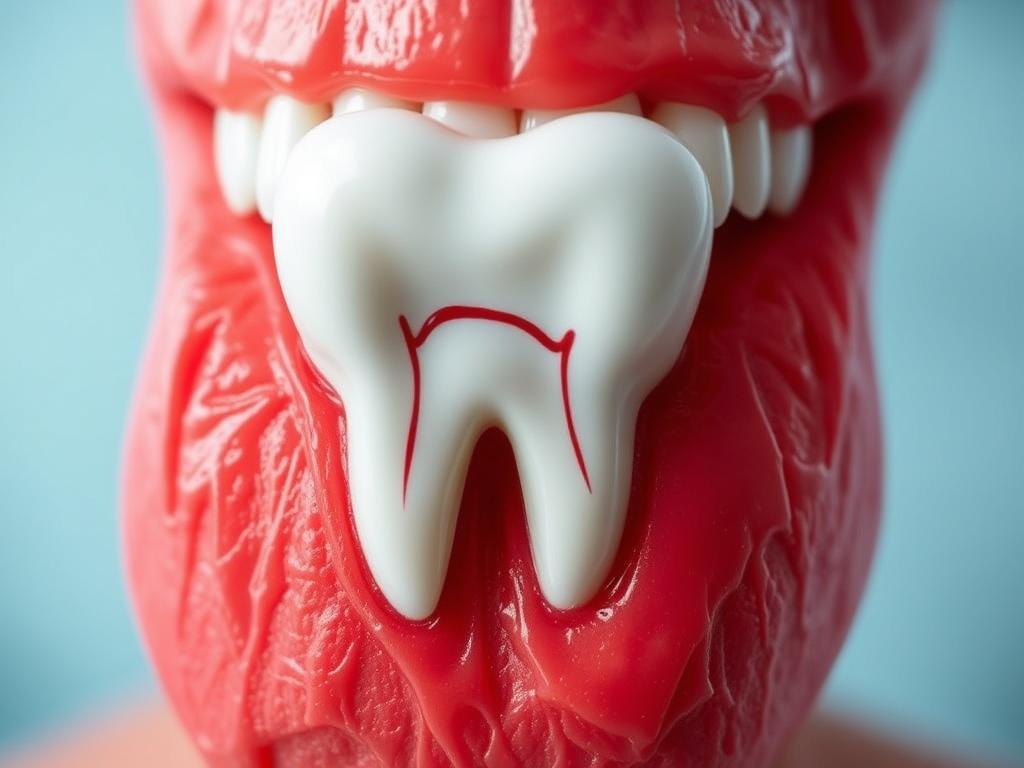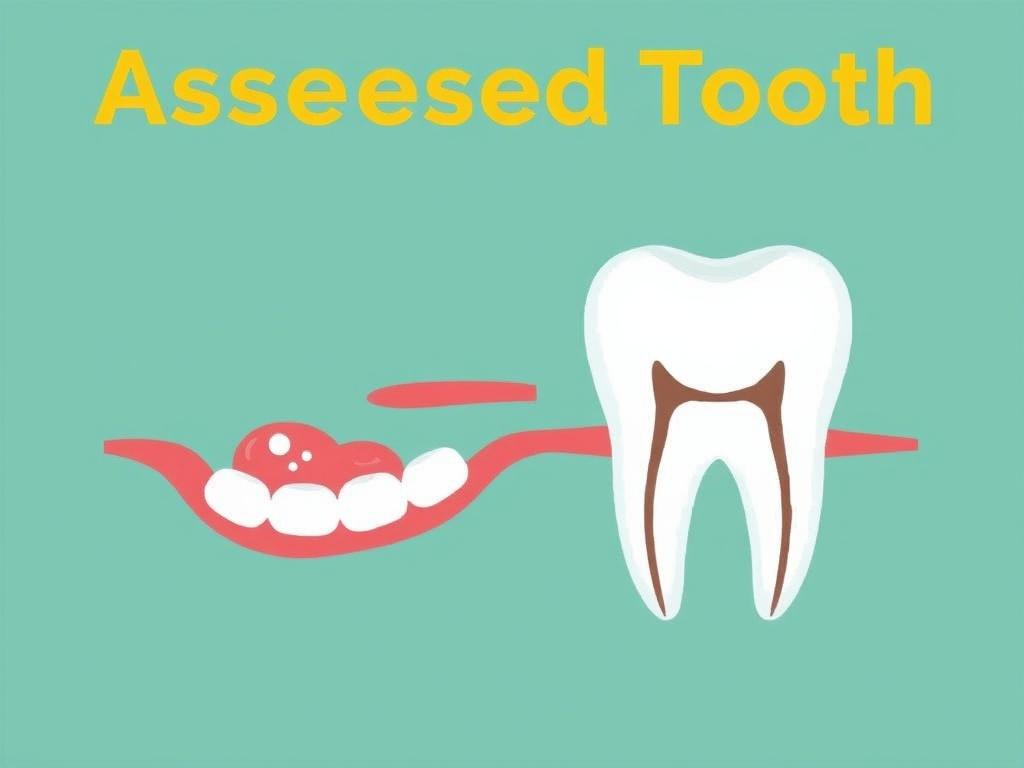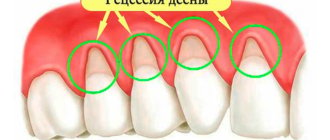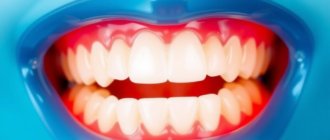An abscessed tooth might sound like a minor dental issue, but it can quickly turn into a serious problem if left untreated. Understanding the danger signs of an abscessed tooth is crucial—not just for your dental health, but for your overall well-being. Many people underestimate the severity of an abscess and delay seeking treatment, which can lead to infections spreading beyond the mouth, causing severe complications. In this article, we’ll explore what an abscessed tooth is, the warning signs you should watch for, and why early diagnosis and treatment are vital. We will also guide you through how to recognize symptoms that indicate you need immediate dental care.
Содержание
What Is an Abscessed Tooth?
An abscessed tooth occurs when a bacterial infection develops inside the tooth’s pulp, which contains nerves and blood vessels, or in the surrounding tissues. This infection causes a pocket of pus to form, creating constant pressure and significant pain. The abscess itself is a survival mechanism—your body’s way of trying to isolate the infection. However, while this pocket of pus might provide temporary relief, the infection beneath it keeps growing, and if it’s not treated, it can spread into other parts of your head and neck, sometimes with dangerous consequences.
Numerous causes can lead to an abscessed tooth, including untreated cavities, cracked teeth, or gum infections. When bacteria reach the pulp through a cavity or a break, they cause inflammation and ultimately the abscess. Understanding what happens inside your mouth when an abscess forms helps explain why the danger signs are so important to recognize.
Common Causes of an Abscessed Tooth
- Severe tooth decay or cavities
- Cracked or chipped tooth allowing bacteria inside
- Gum disease leading to infection of the root
- Injury or trauma to the tooth
- Poor dental hygiene and lack of professional cleanings
Typical Symptoms of an Abscessed Tooth
Pain is usually the first and most noticeable warning sign of an abscessed tooth. This pain can be sharp, throbbing, or constant and may intensify when you chew or apply pressure on the tooth. But pain alone isn’t the only symptom to consider. As the infection progresses, other signs emerge, signaling that the abscess might be worsening.
Many people report sensitivity to hot and cold beverages and sometimes even to sweet foods. This sensitivity is caused by nerve inflammation in the tooth. Swelling is also quite common — it can occur around the affected tooth, the jaw, or even the face, affecting your overall appearance and comfort.
Other symptoms include bad breath or an unpleasant taste in the mouth from the pus draining from the abscess, fever, and swollen lymph nodes under the jaw or in the neck. These systemic symptoms imply that the infection is spreading, and these are clear danger signs that you need immediate medical attention.
Signs and Symptoms of an Abscessed Tooth
| Symptom | Description | What It Indicates |
|---|---|---|
| Severe, throbbing tooth pain | Persistent and intense pain, often worsening at night | Inflammation and infection of the tooth pulp |
| Swelling around the tooth or jaw | Noticeable puffiness affecting the face and gums | Abscess formation causing pus accumulation |
| Sensitivity to hot or cold | Discomfort to temperature changes during eating or drinking | Damage or infection of dental nerves |
| Bad taste or bad breath | Unpleasant taste in the mouth or foul odor | Draining pus from the abscess |
| Fever and general malaise | Elevated body temperature, fatigue, feeling sick | Spreading infection into other parts of the body |
| Swollen lymph nodes | Tenderness and swelling of lymph glands in the neck/jaw | Body’s immune response to infection |
Danger Signs That You Should Never Ignore
While an abscessed tooth always calls for dental treatment, some symptoms signal immediate danger and must never be ignored. These signs mean that the infection may have spread or there is a risk of serious complications such as cellulitis, Ludwig’s angina, or sepsis. Delaying care in these cases can lead to life-threatening conditions.
If you experience rapidly increasing swelling that affects your face, neck, or even your throat, it could obstruct your airway and make breathing difficult. This situation is an emergency. Difficulty swallowing, severe difficulty opening your mouth, or a high fever over 101°F (38.3°C) alongside an abscess are also urgent warning signs.
Additionally, if the infection spreads to soft tissues causing hot, red, and painful swelling that rapidly worsens, it could indicate cellulitis—a dangerous skin infection that requires hospital care and intravenous antibiotics. Another serious sign is confusion or feeling faint.
Urgent Danger Signs
- Rapid facial swelling, especially around the eyes, throat, or under the jaw
- Difficulty breathing or swallowing
- Severe pain that seems unstoppable or increases quickly
- High fever accompanied by chills or sweating
- Swelling extending into the floor of the mouth causing tongue elevation
- Confusion, dizziness, fainting spells
How Is an Abscessed Tooth Diagnosed?
If you suspect you have an abscessed tooth or if you notice any of the danger signs mentioned, it is critical to visit a dentist or an emergency room immediately. The dentist will first take your medical history and ask about your symptoms. Then, a clinical examination will check for visible swelling, tooth sensitivity, and oral pus drainage points.
Diagnostic imaging, especially dental X-rays, plays a key role in confirming an abscessed tooth. X-rays reveal the location and size of the abscess and can help detect whether the infection has spread to the surrounding bone. In some cases, additional imaging or tests may be necessary to gauge the severity of the infection.
Treatment Options for an Abscessed Tooth

Treatment for an abscessed tooth focuses on eliminating the infection, relieving pain, and preventing the infection from spreading. In many cases, the dentist will need to drain the abscess, either by making a small incision in the gum or by creating a pathway through the tooth (root canal treatment). Antibiotics may be prescribed to help control the infection, especially if it has spread beyond the local area.
Sometimes, in severe cases where the infection cannot be controlled or the tooth is badly damaged, tooth extraction may be necessary. Alongside professional treatment, managing pain and swelling with over-the-counter medications and home care measures can provide relief until you get definitive dental care.
Common Treatments for Abscessed Tooth
| Treatment | Purpose | When It’s Used |
|---|---|---|
| Root Canal Therapy | Removes infected pulp and drains abscess | When the tooth structure is salvageable |
| Incision and Drainage | Drains pus to relieve pressure | In cases of pronounced swelling and pus collection |
| Antibiotics | Treats bacterial infection and prevents spread | When infection has spread or risk of spread is high |
| Tooth Extraction | Removes infected tooth when it cannot be saved | Severe decay or damage, or uncontrolled infection |
| Pain Relievers | Reduces inflammation and manages pain | Alongside other treatments to improve comfort |
Preventing an Abscessed Tooth
Prevention is always better than cure, and this holds true for abscessed teeth. The best way to avoid an abscess is to maintain good oral hygiene and attend regular dental checkups. Brushing twice daily, flossing once a day, and avoiding sugary snacks can reduce the risk of tooth decay that often leads to abscesses.
Periodic dental visits enable your dentist to spot any potential problems such as cavities or gum disease early before they develop into serious infections. Addressing dental issues promptly, such as filling cavities and treating gum disease, can prevent bacteria from penetrating the tooth and causing pus buildup.
Simple Steps to Prevent Abscessed Tooth
- Brush your teeth twice daily with fluoride toothpaste
- Floss daily to remove plaque between teeth
- Eat a balanced diet low in sugary snacks and drinks
- Visit your dentist every six months for checkups and cleanings
- Address cavities, cracks, and gum issues promptly
- Avoid smoking, which increases infection risk
When to See a Dentist Immediately
Knowing when to seek prompt dental care can save you from serious health risks. Even if you feel mild tooth pain or swelling, don’t delay scheduling a dentist appointment. Remember that an abscessed tooth infection can worsen quickly. Emergency dental care is warranted when you notice any danger signs mentioned above or if the pain and swelling suddenly worsen.
When you see a dentist, be sure to provide a full history of your symptoms and any recent dental trauma or issues. Early intervention not only saves your tooth in many cases but also prevents the spread of infection to life-threatening areas such as the brain or chest.
Summary of Urgent Situations
| Symptom | Action to Take |
|---|---|
| Rapid swelling of face or neck | Go to emergency room immediately |
| Difficulty breathing or swallowing | Call emergency services or visit hospital |
| High fever with chills | Seek urgent medical attention |
| Severe, unrelenting tooth pain | Make an emergency dental appointment |
Conclusion
An abscessed tooth is more than just a dental inconvenience—it’s a red flag signaling infection that can pose significant danger if ignored. Recognizing the early and advanced danger signs such as severe pain, swelling, bad taste, fever, and difficulty swallowing can be lifesaving. Prompt dental care to diagnose and treat an abscess prevents the spread of infection and protects your health. Maintaining good oral hygiene and regular dental visits are your best defense against developing an abscess. If you ever experience tooth pain coupled with swelling or systemic symptoms, do not delay seeking professional care. Prioritize your oral health because an abscessed tooth left untreated can have consequences far beyond your mouth.






